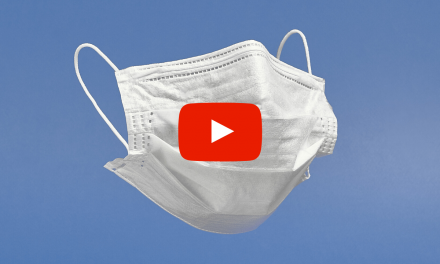
CCGPP: Selecting Relevant Research

The pace at which information is being published is almost too intense to conceive. Critical appraisal of the literature is a skill unto itself. It has been estimated that if an individual attempted to keep up with all the literature related to their own discipline by reading one article per day, by the end of one year he/she would be 99 years behind. The AHCPR guidelines; which were the first governmentally sanctioned review leading to the recognition of the value of high velocity, low amplitude procedures for acute, adult low back pain; located over 10,317 articles. When culled to the relevant ones for the task only 3,918 were left. So how do you select relevant literature for inclusion in a review process like that being attempted by CCGPP for Best Practices?
The process of identifying relevant literature occurs in several steps and at multiple levels so that no single individual is responsible for it. The first step began with the Council on Chiropractic Guidelines and Practice Parameters, (CCGPP) Council approving the basic approach that outlines the scope of the effort and defined the team content areas.
They include:
- Low back and lower extremity related leg problems.
- Neck, neck related upper extremity problems and headaches.
- Thoracic spine and costovertebral disorders.
- Lower extremity disorders not covered in #1.
- Upper extremity disorders not covered in #2.
- Fibromyalgia and myofascial disorders.
- Non-musculoskeletal, prevention, wellness, and special populations.
Obviously, the scope of each area could be so large as to prevent a meaningful ability to perform the task. As a result, the second general step was for the Council to decide on how to objectively constrain the content to a reasonable level. This was accomplished not by the Council or the Commission making an arbitrary decision that could be biased but by providing a common framework for each team to follow that would be grounded itself within the evidence. That is, each team would use the following criteria to define the content material for their own topic area. The criteria given to the team leads was to use the literature itself, but specifically to consider the National Board of Chiropractic Examiners Job Analysis and surveys defining chiropractic practice.
From those sources, each team was to select:
- The most common conditions treated by chiropractors.
- The most common diagnostic procedures used by chiropractors.
- The most common treatment methods used by chiropractors.
The team lead, a chiropractor with clinical and scholarly experience in the topic area, using the content bounds resulting from this process, he/she used three sources to obtain the literature for distribution to the team.
Those methods include:
- Team review of existing systematic reviews, meta-analyses or guidelines
- Search of universally accessible literature databases like the Index Medicus, Cinahl, etc. through volunteer chiropractic college professional librarians.
- Individual materials known to the team members or submitted by any member or group within the profession via the CCGPP offices.
Once materials were obtained, each category of source was screened using methods to winnow down the numbers to relevant materials. For materials in category A above, the team examines the conclusions and, if in agreement with them, uses that as its basis for adding any newer materials not covered or available under the original review, meta-analysis or guideline. If the team disagreed with a recommendation or with the assessment of a specific piece of literature, then that piece is collected and distributed for direct review by the team.
For materials in category B, an expert published in optimizing yield from literature searching is available to assist the team lead in setting up his / her initial search parameters. The search parameters are then taken to a professional research librarian at one of the volunteer chiropractic colleges who performs the search. For materials in category C, the substance depends on the materials supplied by the interested party.
Available Literature
The lists of available literature on conditions (I above) or treatments (III above) are then culled for articles in the form of case series, cohort or randomized trials that have data on issues of patient response to treatment. In the case of diagnostics (II above) articles that address the question of diagnostic tool accuracy including sensitivity, specificity or predictive values are sought. Finally, articles that provide evidence with respect to possible risk stratification, case complexity or prognosis are sought-after.
The remaining materials are matched with standardized evaluation instruments also from the literature that are designed to give a common approach to assessing each type of literature. The matched article with its evaluation tool is then distributed to the team members to be read and scored for quality of evidence and development of evidence tables as may be appropriate.
In summary, selection of articles that constitute the relevant evidence for the practice of chiropractic is distributed among the CCGPP teams themselves and not under any single individual’s domination. Each team follows a common pattern to determine the most common disorders, treatments and diagnostic methods for review.
One advantage of this process is a more readily achievable product describing Best Practices that can be applicable to the broadest distribution of offices within the profession. Later efforts, on an iterative basis, can revisit each area to layer-on the next-most common entities and update Best Practices with the latest information. This process is very thorough, however, feel free to send any research you deem important to CCGPP at PO Box 2054, Lexington, SC 29071 or ccgpp@sc.rr.com. The central office will forward that information to the Commission for distribution and analysis, and possible inclusion in the document.
About the Author:
John J. Triano, DC, Ph.D., is a graduate of Logan College (DC), Webster College (MA), and the University of Michigan (Ph.D.). He is a Fellow of the College of Chiropractic Scientists (Canada) and serves as an editorial advisor to the Journal of Manipulative and Physiological Therapeutics, Spine, The Spine Journal, The BackLetter, and the Journal of the Canadian Chiropractic Association. Dr. Triano is a Research Professor in the Department of Engineering, Biomedical Engineering Program at The University of Texas at Arlington.
To date, he has written 63 scientific and clinical articles and 16 book chapters. He is currently the Co-Director of Conservative Medicine and Director for the Chiropractic Division at the Texas Back Institute, a multidisciplinary spine facility. Dr. Triano also serves as chair of the CCGPP Commission. Dr. Triano is the recipient of a number of awards and honors including the ICA Researcher of the Year (1987), FCER Researcher of the Year (1989), AHCPR Service Award (1993), ACA Council on Rehabilitation Doctor of the Year Award (1998), the DC Person of the Year (2002) and the ACA Chairman’s Award (2003).

















